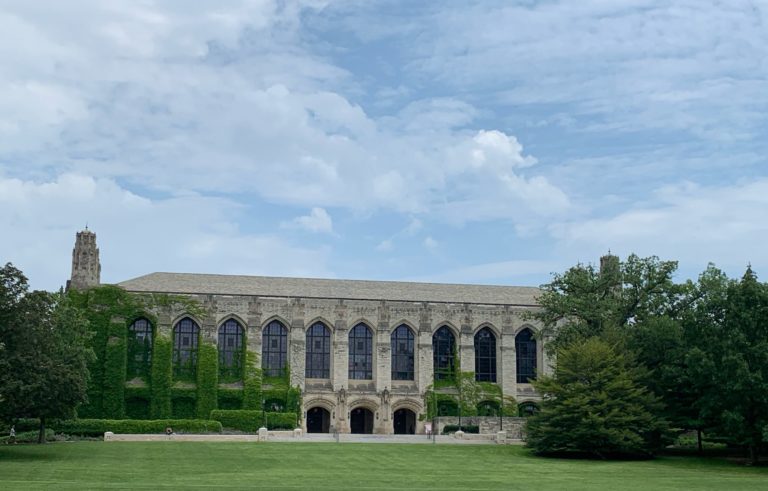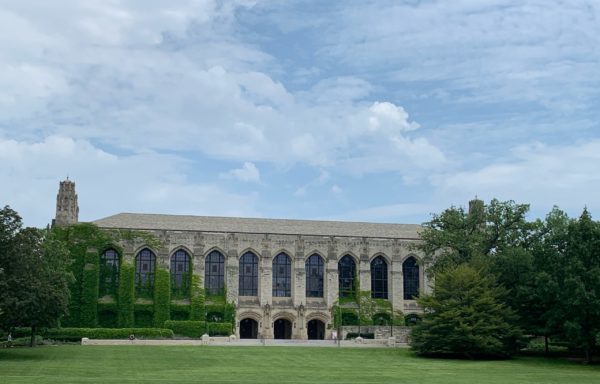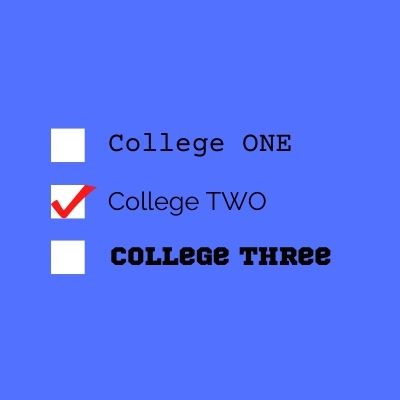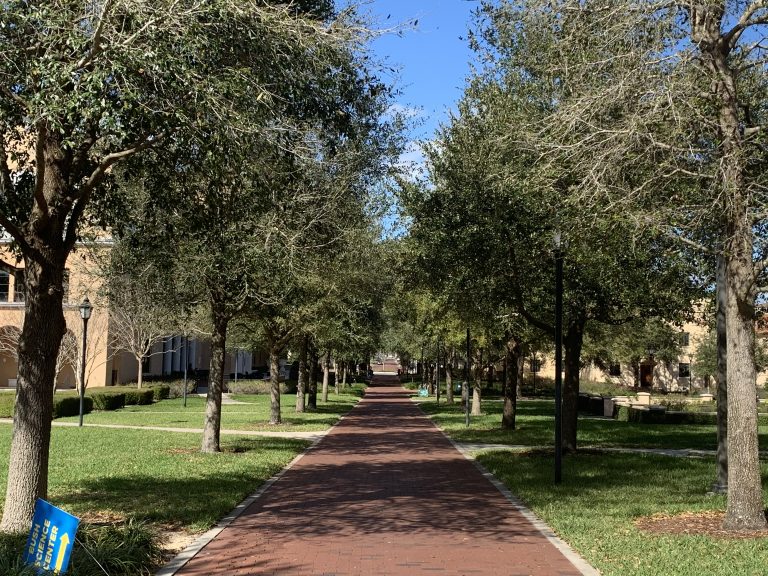Which College Size is Best? Small, Medium or Large?
Last Updated on July 14, 2025 by Jill Schwitzgebel
It is true that college size matters. A small college feels very different than a college in the large category. And sometimes, students hope that they can have the best of both worlds at a medium-sized school. Before going into more detail, it’s important to break down the numbers for each size, for comparison.
- Small – Under 5000 students
- Medium – 5,000 – 15,000 students (some classify this category as under 10,000)
- Large -15,000+ students
Small Colleges

- Small colleges typically are private (not all) and attract students who thrive in discussion-based classes and building relationships with mentors.
- Liberal arts colleges generally fall into the small college category, though they are not the only ones.
- Frequently, these smaller colleges don’t have graduate students on campus, which can mean great research opportunities for undergraduates, as compared to larger schools.
- Often at smaller colleges, students are able to design their own major with the help of a professor in their field of interest.
- Generally, it will be easier for students to get the classes they need to graduate as compared to a larger school, although sometimes, a course isn’t offered every semester, which might decrease scheduling flexibility.
Anecdotally, I find small colleges are the most divisive type for parents and teens. Most often, a parent is the one that understands the benefits to the small college experience for their teen, but the teen isn’t convinced that they want to go to a college that may be the size of their high school. I have seen the reverse happen, as well. A student feels strongly that the small environment is right for them, but the parents are convinced that the student won’t find enough to do on campus (unlikely – students at these colleges are typically very involved in campus activities). Sometimes, the sticker price of these colleges scares families away, but these are the colleges where students are most likely to get merit or other financial aid, making them affordable. Regardless of each party’s feelings on the topic, I strongly recommend that families do a tour of at least one small college before ruling out a college of this category.
If a student is looking for anonymity, this size is not the one for them. They are likely to encounter a student and/or a professor that they know each time they walk across campus. But, for a student who would thrive with the additional opportunities for leadership and involvement, this could be a great fit.
Examples: College of the Atlantic, Maine (private, 350 students), Cal Tech (private, 2,323, students), Amherst College (private, 1,849 students) Rice University (private, 3,965 students)
Large Colleges
- Large colleges are often public, and appeal to students who are looking for lots of choices and amenities on campus, as well as large sporting events.
- Some state flagship universities are among the largest in this category, but it also includes some private colleges like NYU or USC.
- Classes may have hundreds of students in lecture halls in a student’s first years, but will be smaller in higher-level courses
- There will be a wide range of academic majors available to students, and graduate students will usually be available for extra academic support or mentorship, when needed.
- Hundreds of clubs and activities will be available and students will often find their smaller community on campus within one of those.
When people think of the “college experience”, large colleges are often what they think of, complete with football tailgating and fraternity parties. These are often the colleges with name recognition. The undergraduate population may not be as large as it first seems, as there may be a large graduate student population on campus too. Frequently, the sticker price of these institutions are lower than the prices at smaller colleges, if they are public. However, financial aid isn’t always as generous at these schools. Again, I think it’s important that families visit a large college for an official tour, just to get a feel for it and so there is a basis for comparison to a small college.
If your student needs a personal touch to excel academically, this size is likely not the one for them. Or, if they have trouble finding their niche or getting involved in large groups, this also may not be a great fit. But some students prefer to be able to remain a bit anonymous at times, and they are also looking for the excitement that can come with a large college experience.
Examples: University of Central Florida (public, 66,183 students), University of Southern California (private, 46,000 students), Miami University of Ohio (public, 19,452 students), University of Illinois (public, 52,331 students), University of Virginia (public, 25, 018 students)
Medium Colleges
Schools of medium size that fall into the 5,000 – 15,000 range may be just right for some students. However, they do vary in many ways. For some teens, a medium-sized college could also feel like they are just not quite getting the benefits of a large OR a small school. In some ways, a school of 12,000 is going to feel much more like a college of 30,000 than a college of 2,500. However, class sizes are still likely to be smaller than at a large university, and it may feel less overwhelming too. And at the same time, social opportunities may be more varied than at a smaller college. Colleges in this size category may be smaller regional state universities, or may be among the most selective private colleges in the country.
As with small and large colleges, I believe students should visit at least one school in this category too, because it will have a different “feel.” Sometimes, students who have not felt comfortable with either their small or large campus options assume that the medium will be “just right” and they’re correct. But, just as often, it may help them to recognize that actually, they did have a preference for one of the other sizes.
Examples: College of William and Mary (public, 8,939 students), MIT (private, 11,520 students), University of Denver (private, 12,000 students), Vanderbilt University (private, 13,537 students), Florida Gulf Coast University (public, 13,699 students), Northwestern University (private, 8248 students)
Which College Size is Right for Your Student?
There is no question that a college campus with 60,000 students is going to feel different than a college with 2,500 students. There are students that will thrive at either size. For those students, perhaps other factors will be more important to them in their decision than the size of the college. But, for the majority of students that have a preference for one size of college over another, size may need to be heavily weighted. And, it’s important to remember that a college of 20,000 students will mostly “feel” like a college of 40,000, and less like a college with only 7,000 students enrolled. But, ultimately the answer to the question about which college size is best will depend on each student.
As with many factors in the college search, I ask parents to try to remain neutral when discussing college size to avoid influencing their teen’s impression. Visit first, and discuss your own opinions only after having been on several campuses. You might be surprised by your teen’s insights.
Related: 10 Awesome Hidden Gem Colleges









